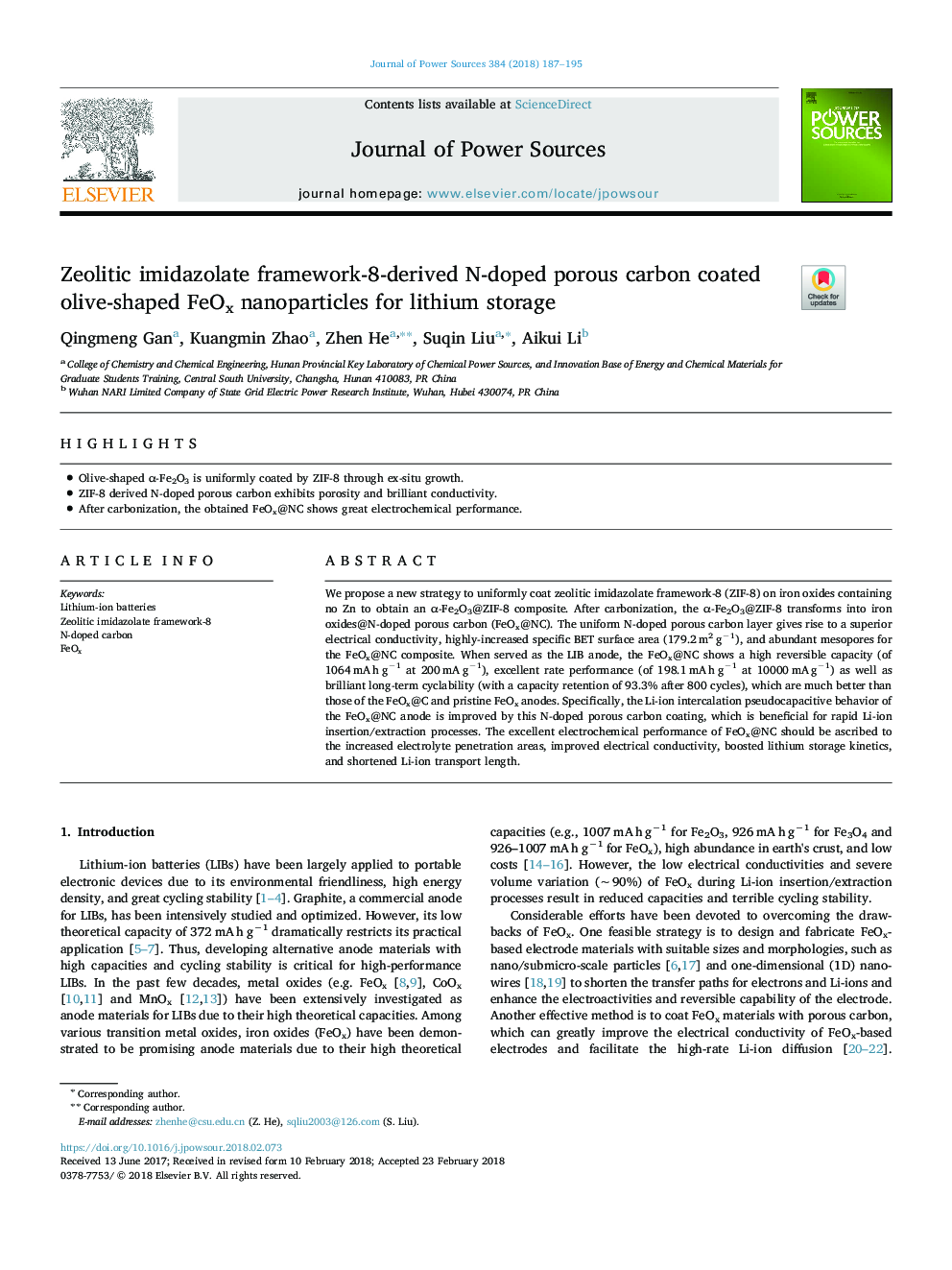| Article ID | Journal | Published Year | Pages | File Type |
|---|---|---|---|---|
| 7725389 | Journal of Power Sources | 2018 | 9 Pages |
Abstract
We propose a new strategy to uniformly coat zeolitic imidazolate framework-8 (ZIF-8) on iron oxides containing no Zn to obtain an α-Fe2O3@ZIF-8 composite. After carbonization, the α-Fe2O3@ZIF-8 transforms into iron oxides@N-doped porous carbon (FeOx@NC). The uniform N-doped porous carbon layer gives rise to a superior electrical conductivity, highly-increased specific BET surface area (179.2â¯m2â¯gâ1), and abundant mesopores for the FeOx@NC composite. When served as the LIB anode, the FeOx@NC shows a high reversible capacity (of 1064â¯mAâ¯hâ¯gâ1 at 200â¯mAâ¯gâ1), excellent rate performance (of 198.1â¯mAâ¯hâ¯gâ1 at 10000â¯mAâ¯gâ1) as well as brilliant long-term cyclability (with a capacity retention of 93.3% after 800 cycles), which are much better than those of the FeOx@C and pristine FeOx anodes. Specifically, the Li-ion intercalation pseudocapacitive behavior of the FeOx@NC anode is improved by this N-doped porous carbon coating, which is beneficial for rapid Li-ion insertion/extraction processes. The excellent electrochemical performance of FeOx@NC should be ascribed to the increased electrolyte penetration areas, improved electrical conductivity, boosted lithium storage kinetics, and shortened Li-ion transport length.
Related Topics
Physical Sciences and Engineering
Chemistry
Electrochemistry
Authors
Qingmeng Gan, Kuangmin Zhao, Zhen He, Suqin Liu, Aikui Li,
